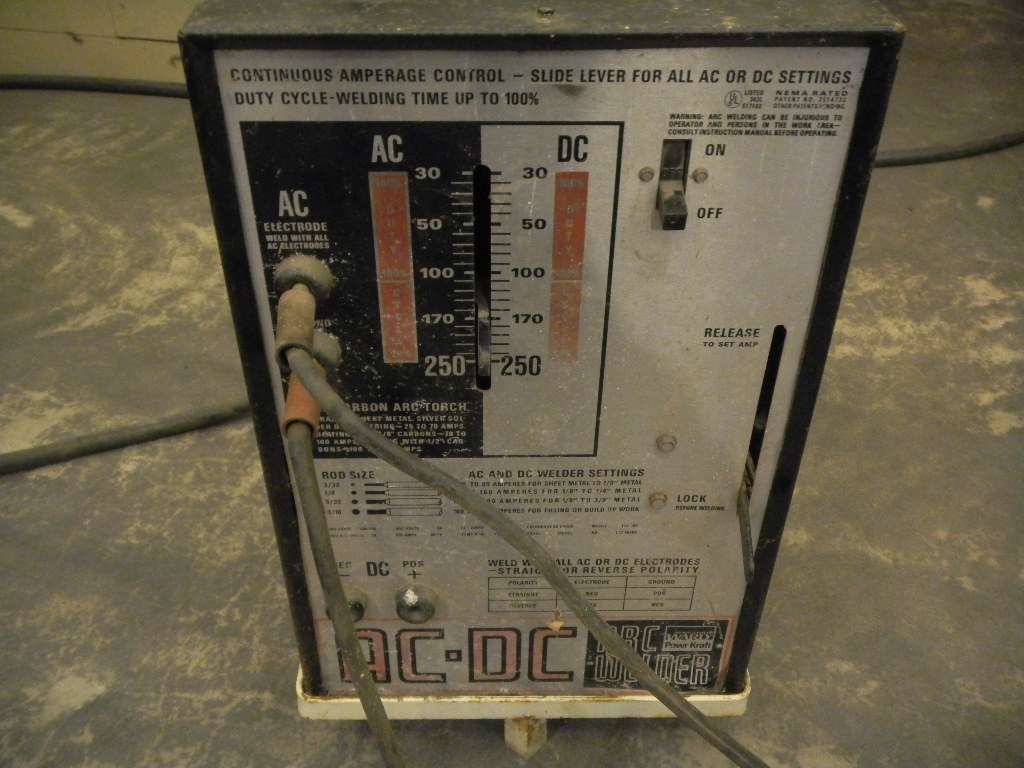rankrank1
Platinum Member
- Joined
- May 23, 2007
- Messages
- 749
- Location
- SW OH - near Dayton, OH
- Tractor
- 1978 Kubota L285, 1951 Farmall h, 1946 Farmall m, 1950 John Deere A, 1953 Ford NAA Golden Jubilee, 195? Ford 850, 1948 Case DC, 1948 Case SC
You know I would have bet big money against this statement! But I would have lost! I never imagined a little 40-year old POS like this would out weld my $6,000.00 Miller machine. Way less splatter, and less than half of the smoke, now how does that work?:confused2:
Well I do have 3 theories
a) Theory #1: I pulled the volt/amp curves for your Miller 330ABP as well as for my vintage Miller Thunderbolt buzzbox (too lazy to look for actual curve for your Century). Anway The curves were remarkably similiar in overall peak and minumum values - yet the 330ABP curve is a bit steeper meaning the volts rise and fall a little quicker on the 330ABP. Messer markets the 80TAC rods as one of the easiest rods to run on low level AC powersource welders. Maybe whatever Messer puts in the rods to help stabilize the arc just can not take the quicker volt increases without smoke and spatter like you experienced on the 330ABP.
b) Theory #2: Was the High Frequency switch left on on the 330ABP or is the switch faulty and staying on even though you thought you turned it off? Hi Frequency AC would weld quite a bit differently than general old 60 hertz AC. Hi Frequency might be incompatible with the arc stabilers that Messer puts in the 80TAC causing the smoke and spatter.
c) Theory #3: Does the 330 ABP have a square wave function? Was this switch left on or is the switch faulty? Square Wave AC is useful in tig welding but square wave is different than the plain old regular Sine Wave AC that would come out of a low level transformer like the Century or Thunderbolt. Again are the arc stabilers that Messer puts in there incompatible with square wave AC?
Thats all I have in the way of possible theories of why the Miller 330ABP did not stick weld well with the 80TAC rods yet the Century (and my Thunderbolt) seem to run them okay.
P.S. (It is nice to see that you were able to experience similar results to my very limited expereince with the 80TAC rods on your vintage Century buzzbox - except your welds look much better than mine).

